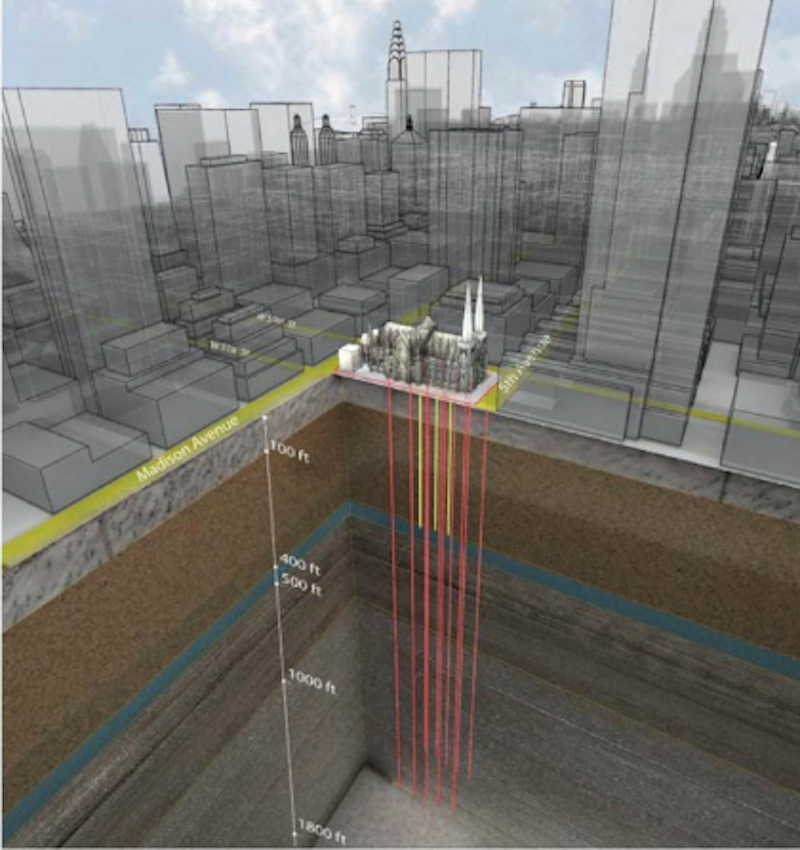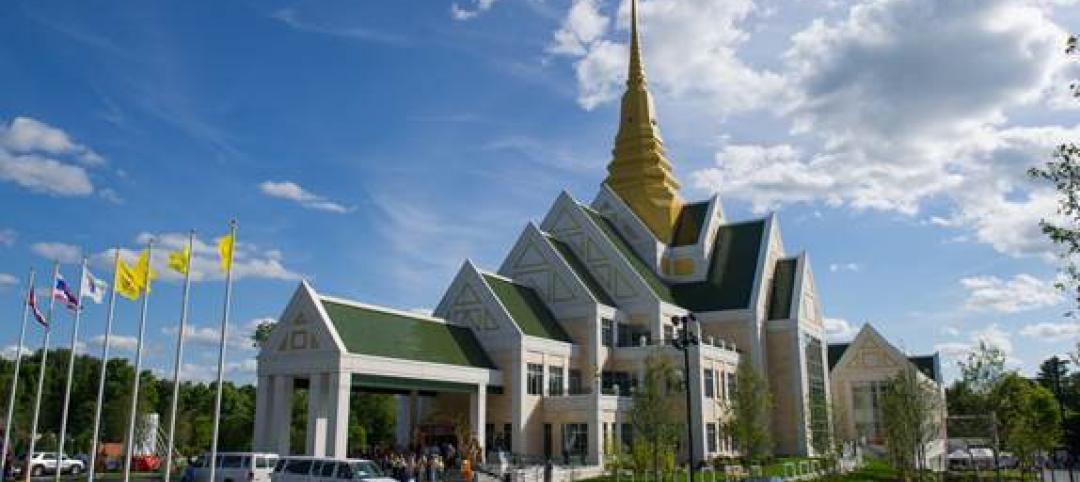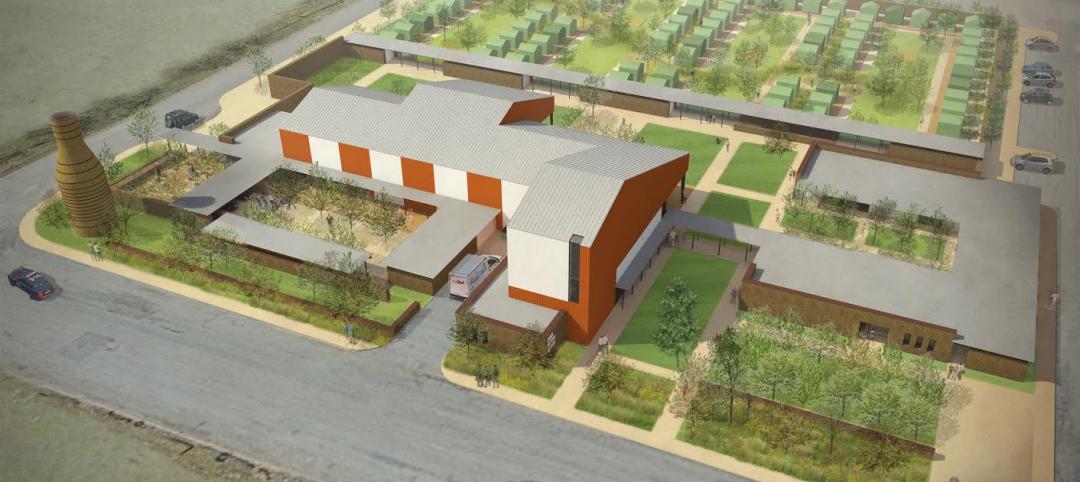As part of the effort to adapt St Patrick’s Cathedral in New York to the structural and environmental standards required of the 21st century, the building has been integrated with a state-of-the-art geothermal plant. The new plant allows the cathedral and adjoining buildings to regulate temperature with increased efficiency and a reduction in CO2 emissions.
In order to accomplish this task, the project’s design team - featuring Murphy, Burnham, & Buttrick, Landmark Facilities Group, and PW Grosser - repurposed the existing infrastructure to harness clean, renewable power from an underground system of 10 wells. Four wells on 51st Street and six wells on 50th Street were drilled to a depth of up to 2,200 feet.
A Dedicated Heat Recovery Chiller extracts thermal energy from the wells and distributes it throughout the campus for heating and cooling purposes. Working in conjunction with the Dedicated Heat Recovery Chiller to accomplish this task is a column hybrid open loop system made up of heat exchangers, air handlers, and fan coils. This system extracts and redirects heat throughout the 76,000-sf building.
St Patrick’s Cathedral’s geothermal plant differs from most in that it is designed to automatically split its cooling and warming functions in order to simultaneously heat or cool the varied areas it services. Most geothermal plants alternate between their warming and chilling functions. The Cathedral’s new plant is capable of generating 2.9 million BTU’s per hour of air conditioning and 3.2 million BTU’s per hour of heating when fully activated.
An additional challenge faced when installing the system was maintaining the standards set for the historic preservation of one of New York’s oldest landmarks. “At the outset, we evaluated a conventional HVAC system, but determined it would pose too many challenges for this historic building,” says Richard A. Sileo, Senior Engineer with Landmark Facilities Group, in a release. “We conducted a feasibility study and found that a geothermal system let us meet our goals with the smallest impact.”
Initial drilling of the wells began in June 2015 and the plant was finalized and ready to launch by February 2017.
Related Stories
| Jun 17, 2014
Nation's largest Thai Buddhist temple opens near Boston
The $60 million facility built in honor of King Rama IX of Thailand is the largest Thai Buddhist temple outside of Thailand.
| Jun 12, 2014
Austrian university develops 'inflatable' concrete dome method
Constructing a concrete dome is a costly process, but this may change soon. A team from the Vienna University of Technology has developed a method that allows concrete domes to form with the use of air and steel cables instead of expensive, timber supporting structures.
| Jun 10, 2014
Gaudi’s famed cathedral on ice: Dutch students to construct 132-foot ice replica of Sagrada Familia
"Sagrada Familia in Ice" will be built with a mixture of wooden fibers and plain ice that is three times stronger than ice.
| May 29, 2014
7 cost-effective ways to make U.S. infrastructure more resilient
Moving critical elements to higher ground and designing for longer lifespans are just some of the ways cities and governments can make infrastructure more resilient to natural disasters and climate change, writes Richard Cavallaro, President of Skanska USA Civil.
| May 20, 2014
Kinetic Architecture: New book explores innovations in active façades
The book, co-authored by Arup's Russell Fortmeyer, illustrates the various ways architects, consultants, and engineers approach energy and comfort by manipulating air, water, and light through the layers of passive and active building envelope systems.
| May 19, 2014
What can architects learn from nature’s 3.8 billion years of experience?
In a new report, HOK and Biomimicry 3.8 partnered to study how lessons from the temperate broadleaf forest biome, which houses many of the world’s largest population centers, can inform the design of the built environment.
| May 13, 2014
19 industry groups team to promote resilient planning and building materials
The industry associations, with more than 700,000 members generating almost $1 trillion in GDP, have issued a joint statement on resilience, pushing design and building solutions for disaster mitigation.
| May 12, 2014
Lubbock, Texas, to build modern 'tent city' as shelter for homeless
On the five-acre site of a former cotton gin, the High Cotton program provides temporary shelter for Lubbock's homeless population. The facility needs to expand due to increased need, and new plans have been drawn up.
| May 11, 2014
Final call for entries: 2014 Giants 300 survey
BD+C's 2014 Giants 300 survey forms are due Wednesday, May 21. Survey results will be published in our July 2014 issue. The annual Giants 300 Report ranks the top AEC firms in commercial construction, by revenue.
| Apr 29, 2014
USGBC launches real-time green building data dashboard
The online data visualization resource highlights green building data for each state and Washington, D.C.

















